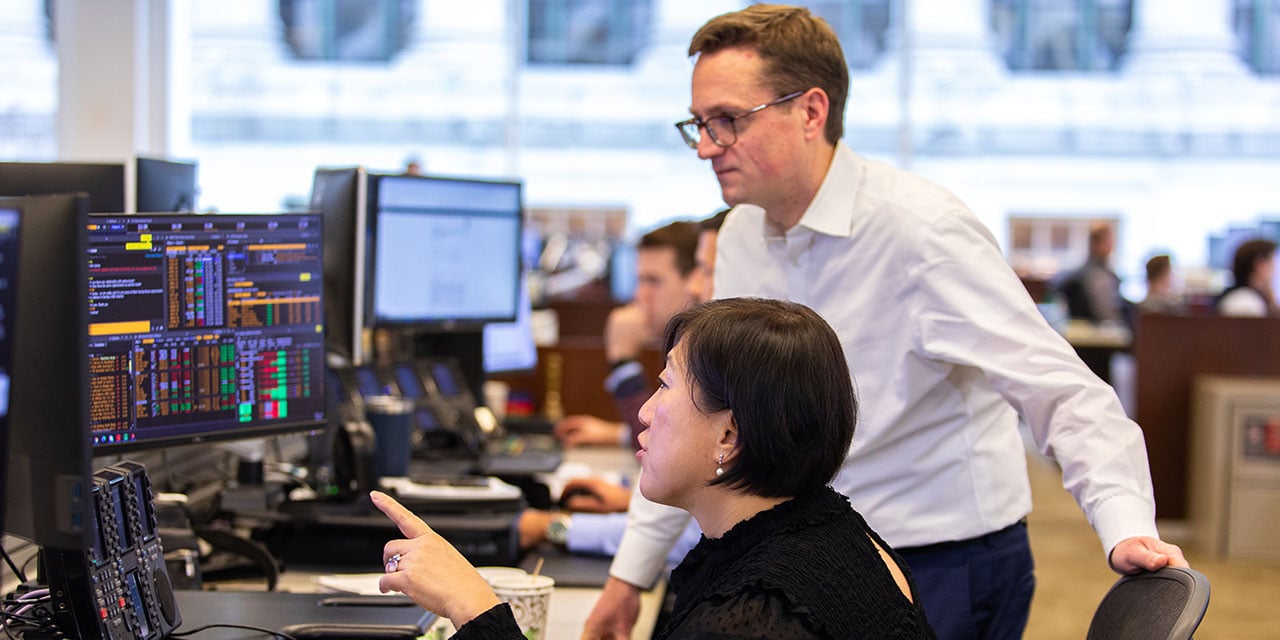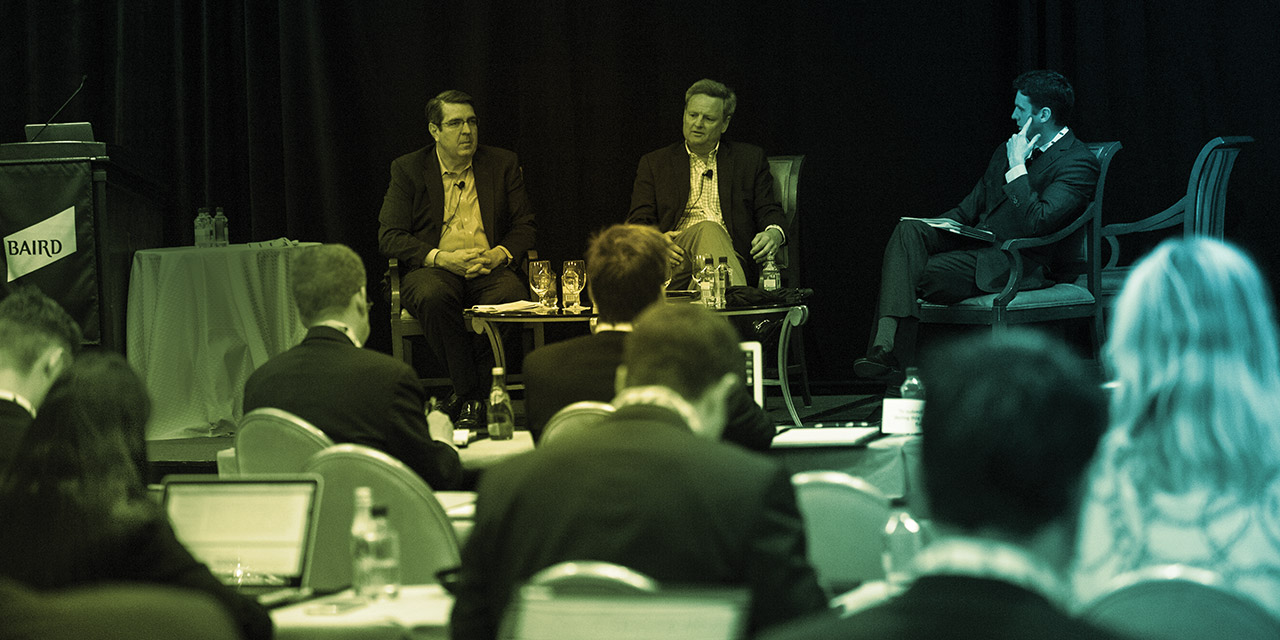Niche No More
Setting a Heading for ESG Investing

Real-Time Perspectives from Sustainability and Impact Investors
Niche no more – environmental, social and governance (ESG) investing has evolved from a lesser-known trend to a very-much-in-demand strategy. There is no single definition of ESG investing or an ESG investing strategy. Thus, investors are defining ESG for themselves, creating a myriad of strategies and approaches.
Baird’s inaugural Sustainability Conference, held virtually in late February 2021, delved into this rapidly evolving space. The two-day event included 700 participants, including more than 430 institutional investors, as well as corporate attendees and other Baird clients. The conference also featured more than 40 presenting companies. Following are highlights from the event.
Sideshow No More
In the U.S., ESG investment assets totaled $17 trillion at the end of 2019 in the U.S, according to data from US SIF. Notably, ESG fund inflows continued their rapid growth in 2020. According to BlackRock, investors contributed $288 billion globally to sustainable mutual funds and ETFs from January-November 2020, a 96% increase over 2019.
Through our team’s discussions with institutional investors across the globe, Baird Equity Research understands ESG criteria are becoming increasingly important in stock selection processes. Our team is seeing similar trends across our research coverage areas. In our technology coverage, we are seeing more and more companies integrating dimensions of ESG into their corporate planning. In the building products space, ESG is gaining incremental focus with investors, with key themes including energy efficiency, material conversion and water use. Meanwhile, packaging companies are ramping their sustainability efforts in concert with publicly announced targets shared by consumer packaged goods customers.
ESG in Practice – Views from Investors
Ben Kallo, Baird’s Senior Research Analyst covering energy technology & resources management, moderated a wide-ranging discussion around ESG topics with impact and sustainability investors at the recent Sustainability Conference. Participants included Craig Bonthron, fund manager at Artemis Investment Management; Alan Hsu, global industry analyst and portfolio manager at Wellington Management; Paul McHugh, director of ESG research at Westfield Capital Management; and Fabio Ranghino, principal and head of sustainability and strategy at Ambeinta.
The group kicked off with a discussion of their firms’ ESG priorities and how they define their work in the space. Bonthron shared a U.K. lens, speaking about the rise of ethical-oriented and SRI funds in the U.K. in the 1980s and the evolution to ESG and thematic funds. To stand out in today’s crowded marketplace, he said, “In order to differentiate yourself and maintain your position at the vanguard of the movement… you really need to frame yourself in positive impact right now, which is the way we see ourselves… if your business is doing something that is creating value for the economy as well as capturing it, then it’s well-positioned strategically. If it’s taking value from the economy and [has] negative impact, then there’s clearly a strategic catch.” Ranghino shared similar points when speaking about Ambienta’s approach: “In general, if you are providing a solution to an environmental problem, you should enjoy a… certain growth factor that the other industries that don't give… we invest only in companies that have a sustainable competitive advantage built on their ability to address a certain environmental issue. Then we put an ESG overlay into the analysis.”
Speaking from a research vantage point, McHugh said, “We look at impact, and I'll call it impact with a lowercase ‘i,’ not an uppercase ‘I,’ meaning [with] every company we're looking at, we're trying to figure out what the impact of the product is.” He also affirmed the importance of a consistent, authentic approach to implementing ESG strategies. “I think when you've got an asset manager… you need to introduce it in a way that's authentic to the way the organization does its investment process. Already coming in with something kind of radical or, you know, trying to fit a marketing definition that you think an asset owner might want for your approach – I think is kind of retrofitting. What you need to do is look at the core competency of the manager and figure out how you can complement that.”
Hsu echoed the importance of consistency in approach. “We firmly believe that the strategy and process has to follow or be consistent with an underlying philosophy… there has been a lot of different variation of types of funds and strategies with different labels, whether they're thematic or sustainability or ESG. I would argue there are probably more funds out there than there are stocks that meet each of our different investing criteria. But the philosophy that we've had has been consistent since day one, going back about 14 years, which is it is fundamentally about a capital markets issue that is underappreciated and mispriced. And so we dedicate [our] portfolio to attempting to solve for that.”
Does ESG Limit the Universe of Potential Investments?
The group discussed the virtues and potential challenges of incorporating ESG principles into investment selection processes. Ranghino said, “You are limiting yourself into a certain extent if you're taking it seriously and you think that sustainability is about moving this world towards a more long-term sustainable path and respectful of the biodiversity that we all rely on,” going on to say the scope of suitable ESG investments would likely increase over time. The drive to avoid obsolescence emerged as an important point. Bonthron added, “We feel like we’re limiting ourselves to the companies that are structurally well positioned and, you know, we're trying to invest in the right state of structural change here. We're trying to avoid obsolescence and capture growth.” McHugh added, “I think part of the asset owner or client or investment community mindset is often, they have this view that you're eliminating certain sectors based on a judgment call or, you know, a philosophical belief… as an example with fossil fuels - well, maybe, you know we're not invested in them because we have a problem with their emissions profile. You know, maybe we're not invested in them because we fear obsolescence. And we fear declining markets.”
Hsu pointed out the related implications for portfolio managers, saying “If you think about portfolio returns as some function of growth, inflation, evaluation, the universes, I think that most of us are picking from a broad enough [group] that we can find good ideas and good companies even as those variables are changing. And so that means even if we're excluding some industries or subindustries because we can't get past the ESG credentials or lack thereof, there's still other opportunities in good companies for which they can match growth, inflation evaluation changes, etcetera and allow our portfolios to remain competitive.” He continued to say, “I think ESG is no longer a niche application for all these companies. Virtually every company now is expressing some ESG or climate policy or strategy. So, I think eventually there will be some convergence and that opens up the opportunity set over time.”
ESG Screening: Helpful or a Potential Pitfall?
The group agreed at this time, ESG screening tools alone cannot provide a thorough evaluation of a company’s ESG credentials. The lack of and inconsistencies in reporting requirements creates additional, significant challenges for ESG investors. Management conversations are essential. McHugh remarked, “I think it puts a premium on the management dialogue between the manager and the company… I think that's critical at this point in the evolution of ESG as a concept is that you need to kind of have that management insight – just like I wouldn't make a fundamental call after only reviewing an income statement and a balance sheet. You know, I need to understand the competitive advantage of the products I need to understand the business model - a lot of qualitative things going to give you that comfort level in the investment.”
Tackling the Inherent Politics of ESG in Client Conversations
The panel turned to the matter of the inherently political nature of certain ESG topics or credentials. Kallo asked the group for their view on how they tackle related questions with their clients. Hsu said ESG “can sometimes be a blunt instrument and overly blunt instrument… and as a result, there can be potentially overreactions to an attempt to over-portray one of the credentials or to mitigate the downside associated with obvious ESG flaws. And I think that's one of the reactions that we're getting. I would say that where you do potentially get this politicization is when you have companies, of course, that may be competitively disadvantaged... but beyond that, I think investors are becoming smart about how to analyze the ESG footprint or credentials of the different companies. And so this idea of wrapping topics or issues with any political wrapper is a little bit less effective.”
Bonthron affirmed the evolution in how investors think about the value proposition of ESG. “I think that the tone has changed in the last five years around that sort of skepticism that you can capture value. It's not as much of a pushback anymore and I think people are beginning to [think] because of the performances that have been generated over the last 10 years… so that gives obviously confidence and that sort of 10-year horizon… that certainly mitigates that sort of cynicism a bit.”

